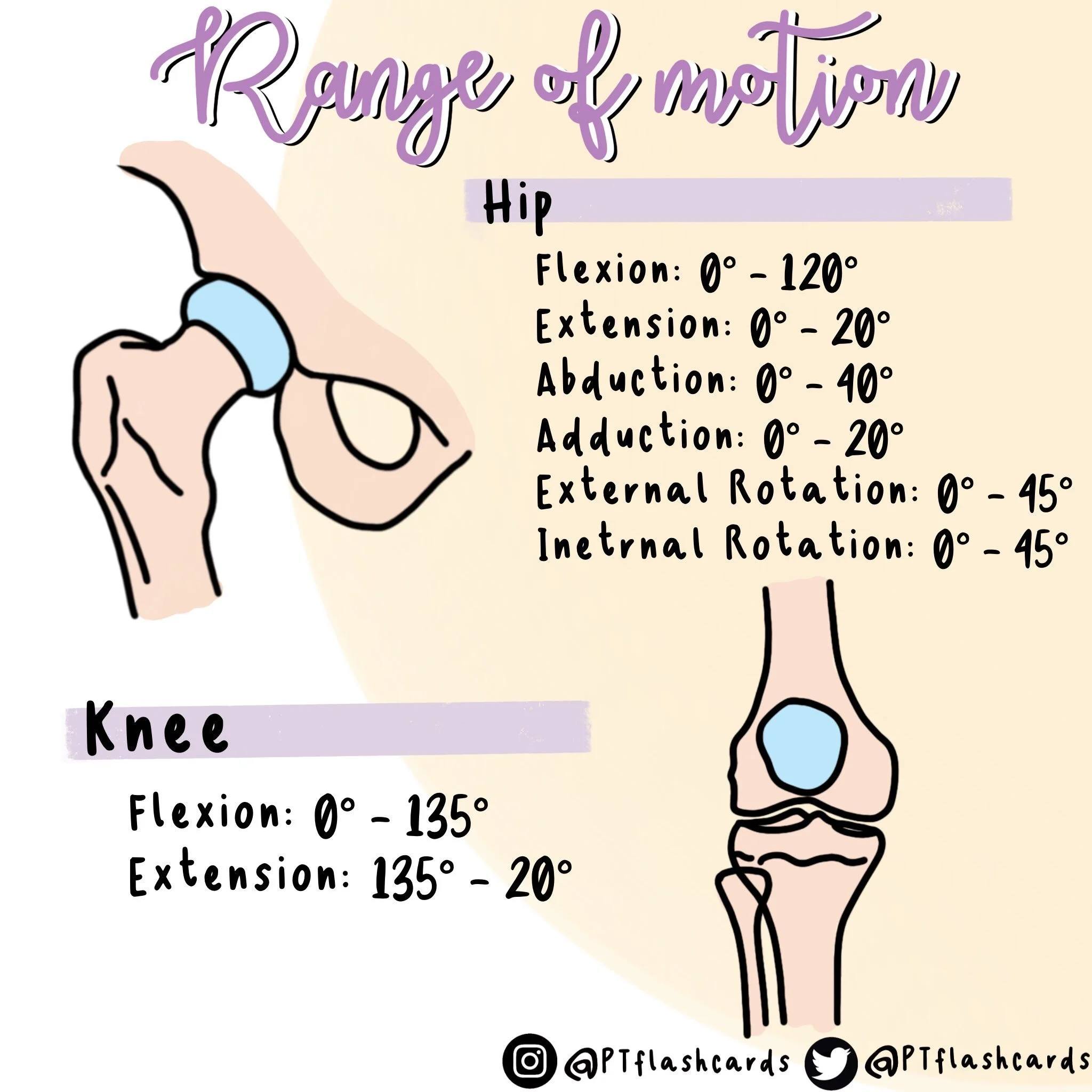Maintaining Your Range of Motion
Losing some range of motion (ROM) is common as we age. ROM refers to how far you can move a joint. You can do this actively, such as by moving your arm or leg, or passively, such as by having me move your arm or leg. We can measure ROM in degrees of movement.
There are statistics on normative ranges by joint. For example, most people can lift their arm to the side up to 180 degrees. Again, you may lose some of this movement due to injury or age. In contrast, if you cross your arm over your chest, the typical range of motion is 50 degrees. Think about moving your leg. You can (or could) flex it in front of you up to about 100 degrees. Dancers can often flex further. If you want to take your leg back behind you, you will find a much more limited range of motion at about 30 degrees.
Different movement terms can get jumbled when we are thinking about ROM. Again, ROM is the degree of movement of the joint. Flexibility is a related term that refers to the ability of the muscles, tendons, and connective tissue around the joint to move through the range of motion with ease and pain-free. The dictionary definition of flexibility is instructive: the ability to be easily modified or a willingness to change.
You likely have an opinion about your flexibility. Based on your experience, you may view yourself as flexible or not. Muscles are designed to contract and lengthen, and flexibility is associated with this ability. We use stretching techniques to encourage this process.
Mobility is the next frequently used term. Mobility refers to the ability to move through a range of motion with control and coordination.
End range refers to either end of a movement. At one end, the muscle is at its shortest, and at the other, at its longest. Picture a bicep curl. Your arms are extended by your sides, lengthening your bicep muscle. By bending your arms to lift the weight, you are contracting your muscle to its shortest.
Your range of motion reflects the joint’s movement capability, flexibility, and mobility. Strength training targets muscles to enhance both strength and flexibility. During a lift, you utilize your joint's full range of motion. You can identify muscle imbalances that may restrict your range of motion.
I design fitness programs to train each aspect. We start with where you are at joint by joint. We progress through steps to support building strength, flexibility, range of motion, and mobility.
Dynamic warm-up with fluid movements similar to during training. We do not static stretch before exercising.
Strength train muscle group by muscle group. I will typically superset the agonist and antagonist muscles, such as the biceps and triceps.
Statically stretch the warmed and trained muscles
Move on to the next set of muscles.
Focus on range of motion and mobility for any injured or stiffer joints.
End the training session with static stretching.
No matter where you’re starting from, you can work on restoring your range of motion at any age! Strength training offers many benefits—it helps you build strength and stamina, boosts bone growth, improves your posture, and even reduces your risk of injury. At Mighty Fit, we recommend a regular strength training program for everyone.


